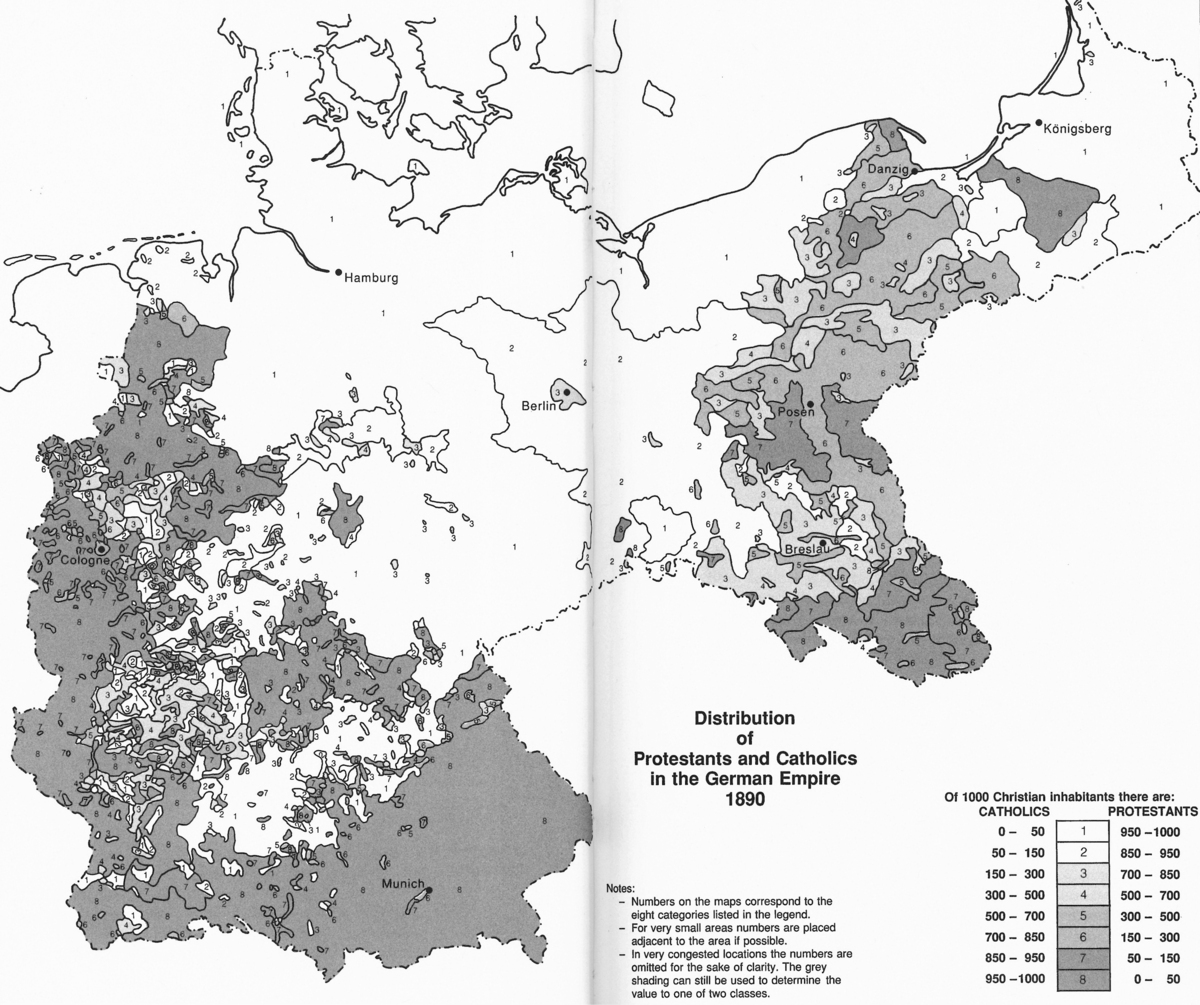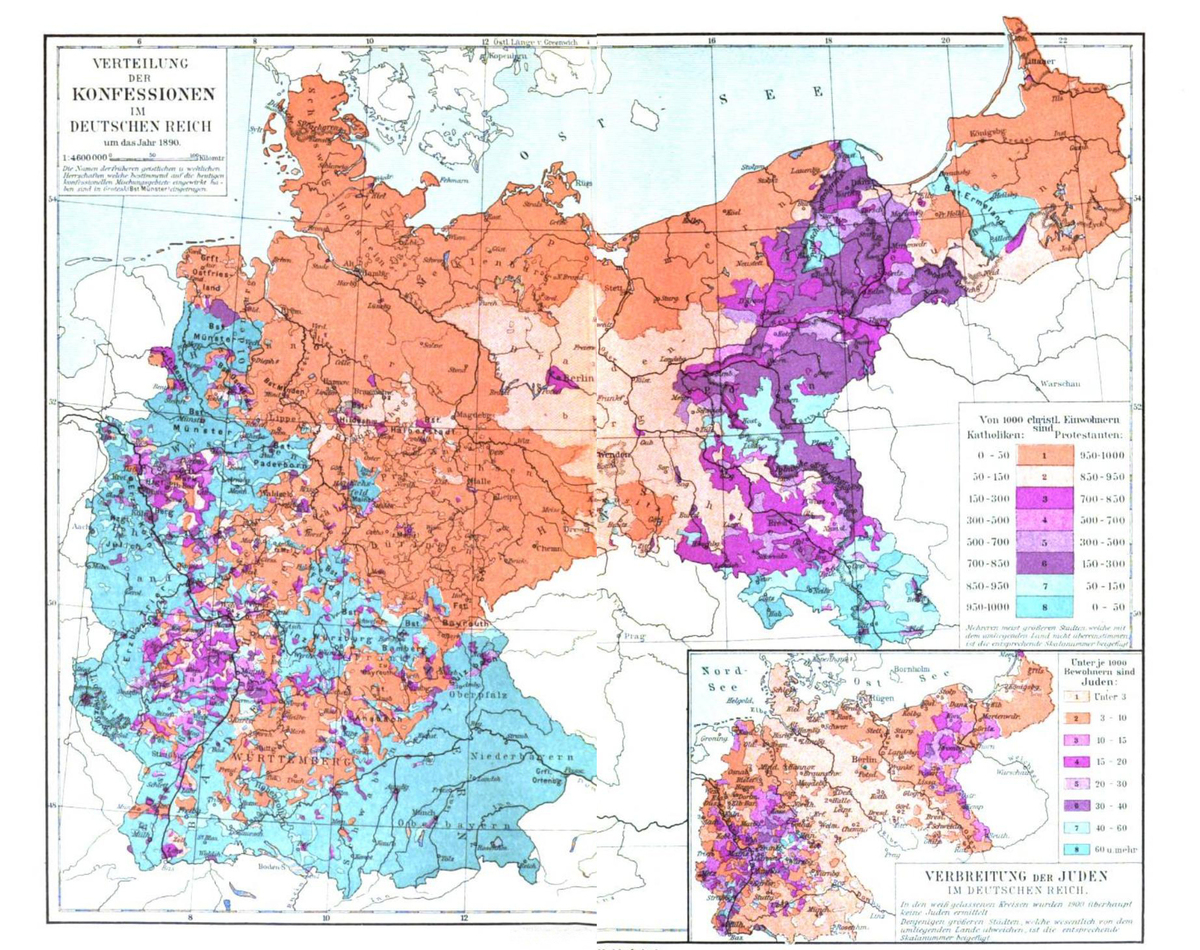Source
Source: Map 1: Verteilung der Konfessionen im Deutschen Reich um das Jahr 1890, in Meyers kleines Konversations-Lexikon, 7. gänzlich neubearbeitete und vermehrte Auflage. Leipzig und Wien, Bibliographisches Institut, 1908. Bd. 2., pp. 332–33. Map 2: Translated and redrawn version reprinted in Helmut Walser Smith, German Nationalism and Religious Conflict: Culture, Ideology, Politics, 1870–1914. Princeton: Princeton University Press, 1995, pp. 2–3.

